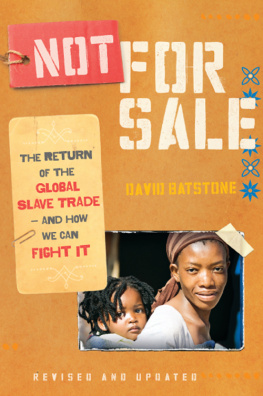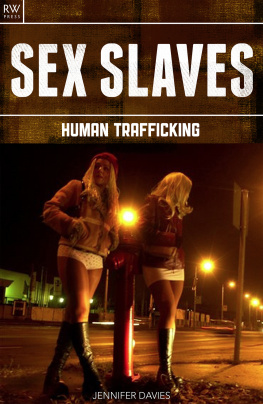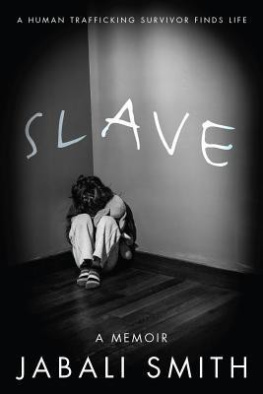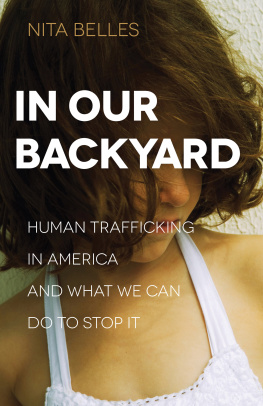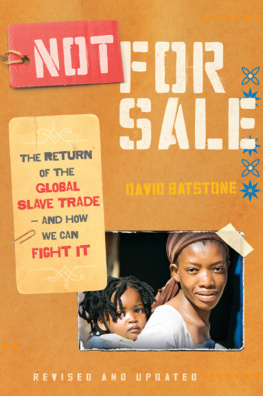Your love surrounds me and your actions inspire me.
Introduction
Finding Slavery in My Own Backyard
Trafficking thrives in the shadows. And it can be easy to dismiss it as something that happens to someone else, somewhere else. But that is not the case. Trafficking is a crime that involves every nation on earth, and that includes our own.
Hillary Rodham Clinton, U.S. Secretary of State
More than 30 million slaves live in our world today. Girls and boys, women and men of all ages are forced to toil in the rug-loom sheds of Nepal, sell their bodies in the brothels of Rome, break rocks in the quarries of Pakistan, fight wars in the jungles of Africa, and sew clothes in the garment factories of California.
Go behind the facade in any major town or city in the world today, and you are likely to find a thriving commerce in human beings. You may even find slavery in your own backyard.
For several years my wife and I dined regularly at an Indian restaurant near our home in the San Francisco Bay area. Unbeknownst to us, the staff at Pasand Madras Indian Cuisine who cooked our curries, delivered them to our table, and washed our dishes were slaves.
It took a tragic accident to expose the slave-trafficking ring. A young woman found her roommates, seventeen-year-old Chanti Prattipati and her fifteen-year-old sister, Lalitha, unconscious in a Berkeley apartment. Carbon monoxide emitted from a blocked heating vent had poisoned them. The roommate called their landlord, Lakireddy Reddy, the owner of Pasand, where the girls worked. Reddy owned several restaurants and more than a thousand apartment units in northern California.
When Reddy arrived at the girls apartment he declined to take them to a hospital. Instead, he and a few friends carried the incapacitated girls out of the apartment in a rolled-up carpet and put them into a waiting van. When Reddy and his cronies tried to force the roommate into the van as well, she put up a fierce fight. A local resident, Marcia Poole, happened to be passing by in her car at that moment and witnessed the bizarre scene of several men toting a sagging roll of carpet with a human leg hanging out the side. She slowed her car down to take a closer look and was horrified to see the men attempt to force a young girl into their van. Poole jumped out of her car and did everything in her power to stop the men. Unable to do so, she stopped another passing motorist and implored him to dial 911 and report a kidnapping in progress. The police arrived in time to arrest the abductors.
Chanti Prattipati never regained consciousness; she was pronounced dead at a local hospital. A subsequent investigation revealed that Reddy and several members of his family had used fake visas and false identities to traffic hundreds of adults and children into the United States from India. In many cases Reddy secured visas on the pretext that the applicants were highly skilled technology professionals who would be placed in a software company. In fact, they ended up working as waiters, cooks, and dishwashers at Pasand or at other businesses that Reddy owned. He forced the laborers to work long hours for minimal wages, money that they returned to him as rent to live in one of his apartments. Reddy threatened to turn them in to the authorities as illegal aliens if they tried to escape.
The Reddy case is not an anomaly. In fact, just as it happens in my community, it likely happens in your community, too. Well over one hundred thousand people live enslaved at this moment in the United States, and as many as seventeen thousand new victims are trafficked across our borders each year. Attorneys from the U.S. Department of Justice have prosecuted slave-trade activity in cities across the United States and in nearly every state of the nation.
Like the slaves transported to Americas shores two hundred years ago, todays slaves are not free to pursue their own destinies. They are coerced to perform work for the personal gain of those who subjugate them. If they try to escape the clutches of their masters, modern slaves risk personal violence or reprisals to their families.
Just how prominent a global crisis the slave trade has become was apparent when President George W. Bush took the podium before the United Nations General Assembly in September 2003. As expected, the president first addressed international concerns over the U.S. intervention in Iraq. As he neared the end of his speech, Bush shifted his attention to another humanitarian crisis of global proportions. Each year eight hundred thousand to nine hundred thousand human beings are bought, sold, or forced across the worlds borders, he said. The trade in human beings for any purpose must not be allowed to thrive in our time. Bush went on to underscore how the slave trade targets vulnerable women and children and fuels a thriving organized-crime syndicate that threatens global security.
President Bush did not exaggerate the crisis, which has grown at an alarming pace since he spoke those words in 2003. The commerce in human beings today rivals drug trafficking and the illegal arms trade as the top criminal activity on the planet. The International Labour Organization, the eighty-year-old nongovernmental agency tied to the United Nations, reports that forced-labor victims have been denied more than $20 billion in earned wages, and that figure does not include victims of sex trafficking.
In recognition of the fact that human trafficking was spinning out of control, the U.S. Congress created a high-level position at the State Department specifically to combat the slave industry. President Bush first appointed former congressman John Miller to the post in March 2003 and promptly lifted his position to the ambassador level. Ambassador Luis CdeBaca, a former prosecutor in the Department of Justice, currently holds the post. The primary mission of the Office to Monitor and Combat Trafficking in Persons is to motivate and support governments to address their own participation in the global slave trade. To that end, one of its most potent tools is a report called the Trafficking in Persons (TIP) Report, published annually since 2001 as mandated by the U.S. Congress. When the TIP Report was first issued, only 82 countries were ranked according to their efforts to fight human trafficking on their home turf. In 2009, the State Department ranked 175 nations.
No nation wants to be known as a haven for slaveholders and traffickers. Nonetheless, 145 countries are listed as Tier 2 or lower on the 2009 TIP Report issued by the State Department. These nations may be source, transit, or destination countries for victims of human trafficking. In some cases, these countries serve as a base for all three activities. The exhaustive research that the State Department conducts makes it clear that slavery plagues every country, even the United States.
Many people bristle to hear the word slavery used to describe the modern practice of exploitation. Deeply ingrained in the collective psyche of Western culture is the notion that slavery ended in the nineteenth century. It is not unusual to read a newspaper account of slavelike conditions in a copper mine in, say, Bolivia. The laborers were kidnapped, coerced to work without pay, and prohibited from leaving the mine. So why would the writer refer to the laborers condition as slavelike? Because the writer buys into the cultural myth that real slavery was vanquished long ago.
It certainly was a momentous day in 1833 when the British Parliament passed the Slavery Abolition Act, which gave freedom to all slaves held captive in the British Empire. Likewise, the Thirteenth Amendment to the U.S. Constitution, passed in 1865 at the conclusion of the Civil War, left no ambiguity about the legal standing of slavery in America: Neither slavery nor involuntary servitude... shall exist within the United States, or any place subject to their jurisdiction.

